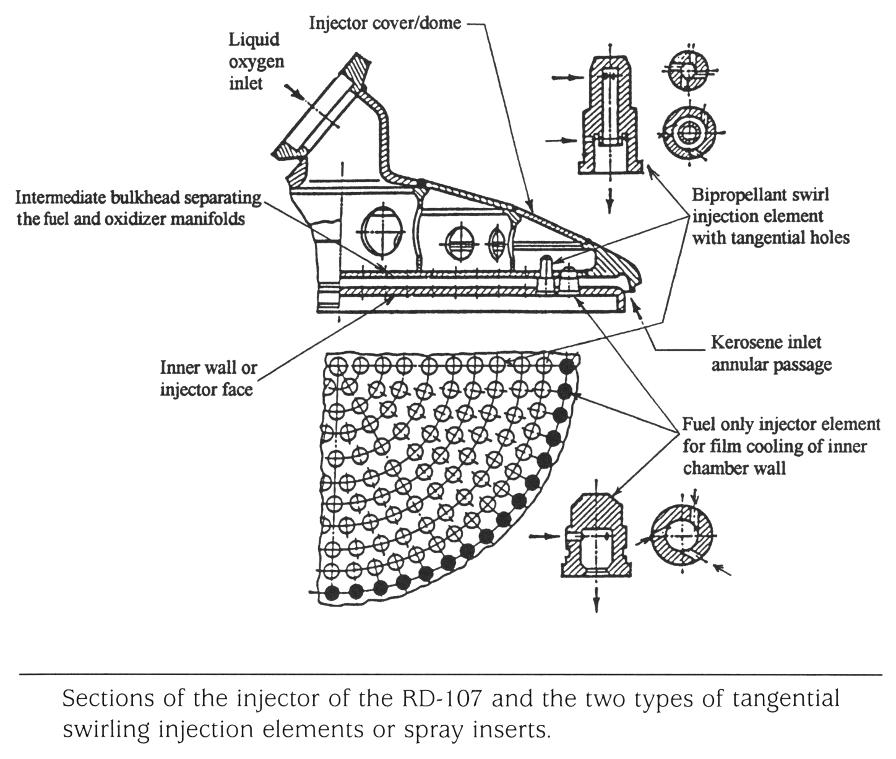RD-107 Injector
The RD-107 was the Soviet Union's first large rocket engine to enter production. They were unable to solve the problems of combustion instability and so opted for four smaller combustion chambers fed from the same turbopump. Each combustion chamber had a flat-face injector.
The History of Liquid Propellant Rocket Engines describes the injector:
The injectors of the RD-107 and RD-108 feature an outer welded dome-shaped bulkhead plate (on top of the oxidizer distribution cavity), a middle bulkhead plate (which separates the fuel and oxidizer passages), and a flat inner wall made out of a more conductive material. Many short steel tube assemblies (or bipropellant injection elements) at right angles to the injector face are brazed to the middle and inner walls. Spiral inserts into the center tube and tangentially drilled holes allow for tangential flows of the oxygen and the fuel inside each injection element. the propellants then flow in spirals and are "whirled." At the exit of each injection element the propellant flows form two conical propellant sprays. There are 337 such tubes or injection spray points, arranged in 10 rings. The outer rings spray only fuel on the inner chamber wall (film cooling) and keep the wall temperature below 380° C or 716° F.
Click image for a 2896x2452 pixel version of this image in a new window.
From page 603 of History of Liquid
Propellant Rocket Engines.
Scan and reconstruction by heroicrelics.

